The True Fundamentals of Jiu Jitsu Masterclass
As a beginner it is very confusing where to start.
Everybody will tell you to start with “The Fundamentals“.
Yet nobody seems to be sure what these Fundamentals are.
Some coaches will teach you basic techniques eg…
armbar, triangle choke, scissor sweep, double under pass, double leg takedown, etc…
At first glance this seems like a good idea; these techniques are very common in Jiu Jitsu and get used all the time. So it would make sense to teach them first, doesn’t it?
Well, yes and no. It does make sense to start your journey in Jiu Jitsu with those techniques that are the most common.
But when you start thinking about it, there is nothing “basic” about any of foramentioned “moves”.
Every single Jiu Jitsu technique takes years and years to master. And even then the perfect execution can only be done in relation to what the opponent is doing.
To make your journey and the journey of everyone in Jiu Jitsu easier, we should first start with a proper definition of what is a “Fundamental”.
A Fundamental in my personal opinion, is a basic building block that is always used and present in every single human activity.
Zen Camp BJJ Globetrotters Wim Deputter The True Fundamentals of Jiu Jitsu Masterclass
I said human activity, not motion, on purpose. The Fundamentals, the basic building blocks, are general for every single sport, be it football, swimming, walking, climbing, boxing, wrestling or Jiu Jitsu.
The most basic element of being alive, is breath. Your whole life literally starts with an inhale and ends with an exhale. The illusive moment in between both is a direct methaphor for life itself.
Therefor it stand to reason that the most basic Fundamental of any human activity starts with conscious and mindfull breathwork.
Mastering you breath, allows you to master your unconscious mind and through that your emotions and motions.
Next we have to define how the body moves.
To make sense of human motion, you have to define a default state. The default state of a body ready for action, should be the perfect middle between tension and relaxion.
This is what we call “Form Tension“.
In combination with mindfull breath, you can call the ideal default state “connection to one self“.
Once you are “connected to yourself“, you can be conscious about your connection in relation to gravity. This is your “weight distribution“.
Lastly, in the context of martial arts you want to be connected to your opponent.
The connection to your opponent happens in three layers.
From body to body connection to breath connection and through both connection of the mind.
When you are aware of your opponent’s breath and his motion, you can quite literally read his intentions and mind and in that sense accurately predict the next step.
Only through true mastery of your connection, can you both sense your opponent’s intention, while hiding your own.
Zen Camp BJJ Globetrotters Wim Deputter The True Fundamentals of Jiu Jitsu Masterclass
After you understand connection, you have to understand the basics of human motion.
Every single human motion consists of a combination of four core motions:
-shoulder to hip and hip to shoulder rotation
-forward and backward hinge
-lateroflexion of the spine in relation to the hip
-pivot around a central axis point
These four core motion represent the four planes of movement.
Every single “technique” in Jiu Jitsu or Grappling consists of the following five steps that combine and become incremental:
-Attach to your opponent
-Rotate
-Hinge
-Lateroflex
-Pivot
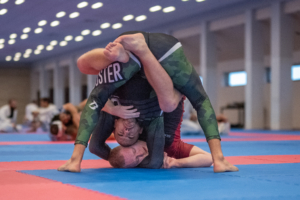
Zen Camp BJJ Globetrotters Wim Deputter The True Fundamentals of Jiu Jitsu Masterclass
Your rotation is chosen in relation to your partner and every subsequent step is choosen in relation to that initial rotation.
Every step when done right increases the compression of your opponent in case of “Offense” or decreases compression in case of “Defense”.
You only switch the rotation after your opponent switches his. The one who switches the rotation first, always loses a step in the proces.
This is the basis of the “Mirroring Principle“.
If you understand Jiu Jitsu in this way, every single “Technique” or altercation between two moving bodies becomes exactly the same. The only difference between “techniques” then becomes the initial attachment.
There are as many different “techniques” as there are possible ways to attach two human bodies.
Most likely not unlimited, but by all means incalculable.
We should therefor be very careful when naming “techniques”.
If every technique is defined by the initial attachments and the outcome decided by a set of parameters, then it stand to reason that there cannot be an exact definition of a technique. Every technique is therefor a spectrum. Just like the colors “red” or “blue” don’t exist, only the red and blue spectrum.
And when you name one shade of blue or red, you better name them all or people start to identify with one particular shade, start to consider the shade as the whole or attack the group(s) to got attached to a different shade.
In the Bible and Koran, Mozes considers it heresy and dangerous when he sees his fellow men constructed an idol of God in the shape of a cow.
How can you depict the “Whole” with just one part of it?
To define a dot on the Infinite Spectrum, is to risk forgetting The Whole.Zen Camp BJJ Globetrotters Wim Deputter The True Fundamentals of Jiu Jitsu Masterclass
In the same sense we should be very careful in naming techniques. Or at least make sure that we understand that every technique is just an attachment with a spectrum of outcomes where both players can come out on top or bottom.
To give a concrete example.
There is often a distinction made between a front, sideways and rear triangle.
By giving three different names, one might consider them three different techniques instead of the same thing but with infinite angles.
In reality there is just the “Triangle Spectrum” with unlimited angles, where the frontal angle is the worst and the 45 degrees are the best.
In everything in reality, what is true for the small is true for the whole.
Every single “technique” can therefor be used to understand the whole of Jiu Jitsu, even the whole of human interactions and I dare to say the nature of reality itself.
To give you more sense of this all, I made this video “The True Fundamentals of Jiu Jitsu Masterclass“.
I consider it my best class ever and it would make me very happy if many people watch it and understand the point.
I believe Jiu Jitsu and the world could be better for it.
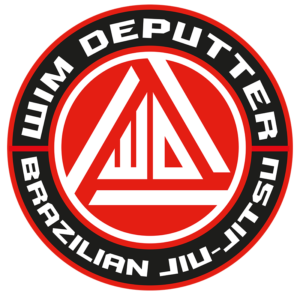
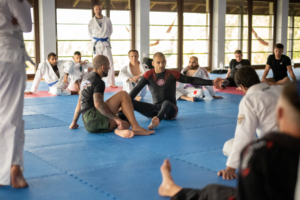
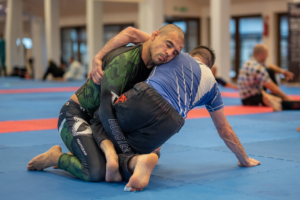
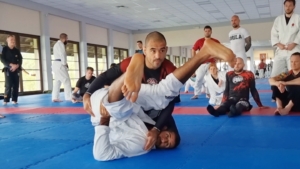
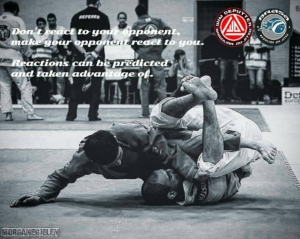 Wim Deputter VS Muuig Atlantuig. Photo by Morgane Gielen[/caption]
Wim Deputter VS Muuig Atlantuig. Photo by Morgane Gielen[/caption]